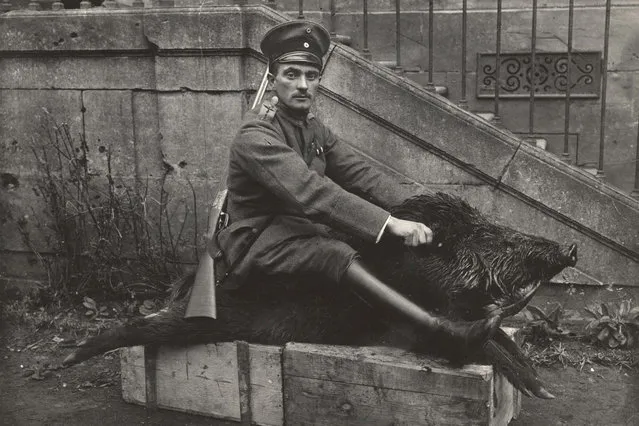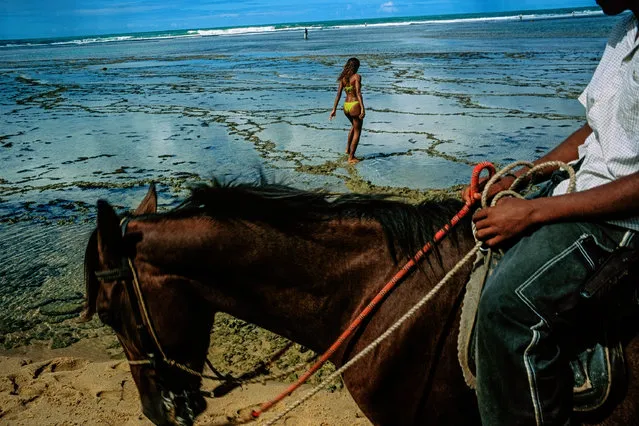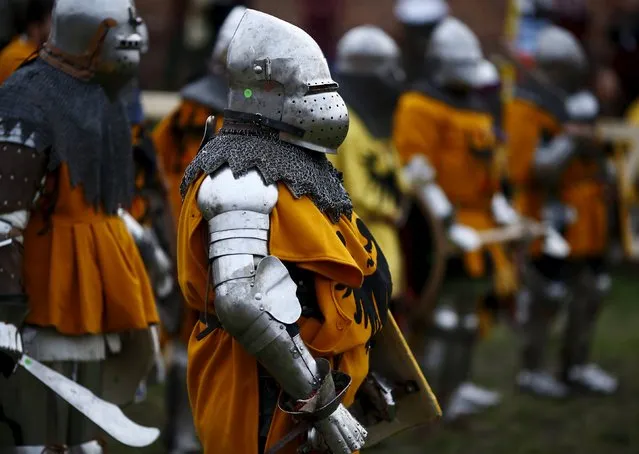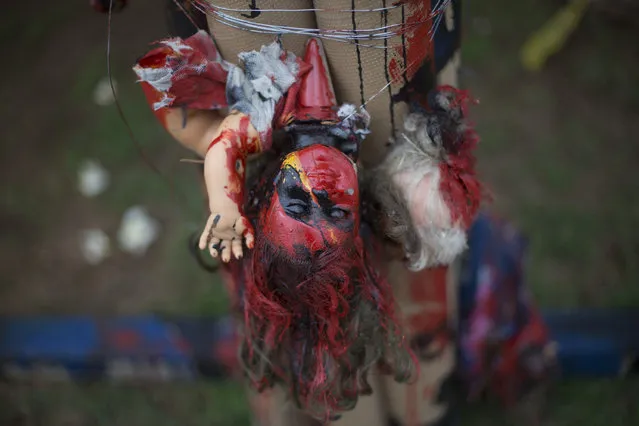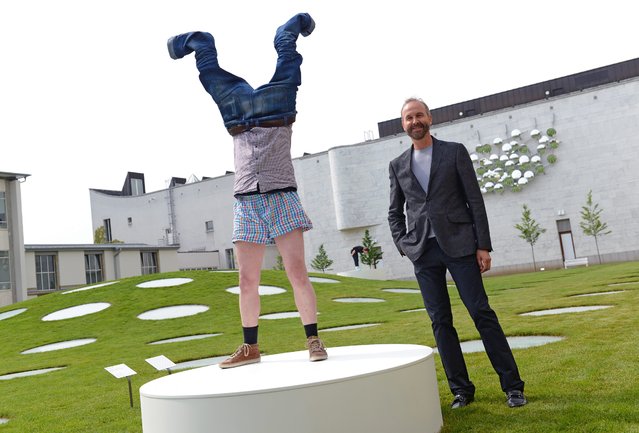
Austrian artist Erwin Wurm (R) stands next to an extra of his participation sculpture “Hose lueften, Haende hoch” (air out pants, hands high) at the garden of the Staedel Museum, in Frankfurt am Main, Germany, 06 May 2014. The series “Wurm: One Minute Sculptures” include painted or written instructions tell the person what they have to do and where for 60 seconds. The exhibition runs from 07 May to 13 July. (Photo by Arne Dedert/EPA)
08 May 2014 07:19:00,post received
0 comments

